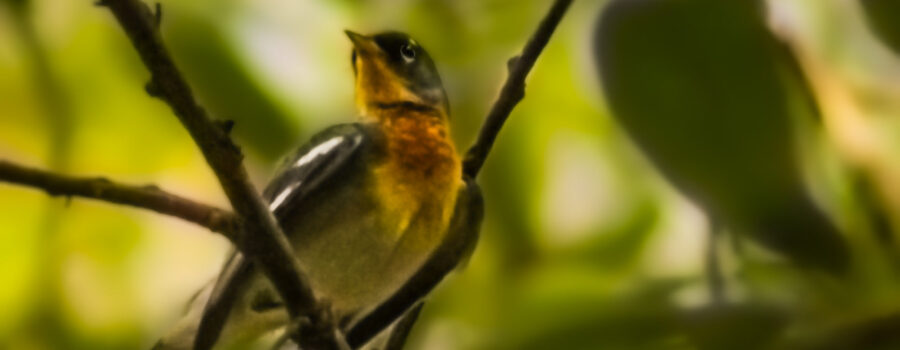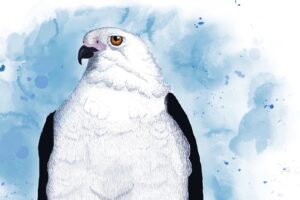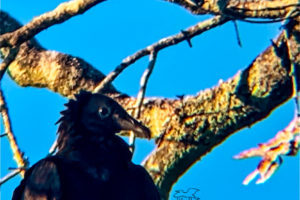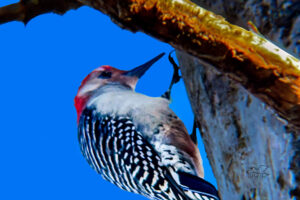The Northern Parula is a Beautiful Little Warbler

Not long ago, I was wandering in my yard, looking for butterflies and other pollinators. My meanderings are often accompanied by bird song, and I actually wasn’t being a very good naturalist, because I wasn’t paying much attention. There are quite a few small songbirds on my property since I feed them, but this time of year it’s rare to be able to spot them through all the leaves on the trees. I finally realized that one song seemed particularly loud and looked around to find this little northern parula (Setophaga americana) sitting in the trees above me. I think his song was meant to be a warning that I was getting into his territory because when I stopped walking he stopped singing and went about preening and acting rather proud of himself. I was happy to take advantage of his bravado and take a few photos.

Northern parulas are migratory warblers that breed in the eastern half of North America from southern Canada to Florida. In the winter, they migrate south to Mexico, Central America, and the Caribbean islands. During the breeding season they tend to be monogamous and males will guard a territory. After the breeding season, however, they are quite social and are often seen in flocks of other small warblers and songbirds. Interestingly, they also tend to use different habitats during the seasons as well. This time of year, they are usually found in moist, heavily wooded areas. They prefer to have a fair number of mature oaks, pines, spruce, or hemlock trees. They build their nests out of either Spanish moss (in the south) or old man’s beard. They will find a suitable clump hanging from a tree and hollow out the nest. Then they line the nest with animal hair or soft grasses. Down here most couples will raise two broods, but up north it is usually only one. During the winter months they can be found mainly in more open habitats like farm fields, pastures, prairies, and meadows.

Like other warblers, northern parulas feed mainly on small invertebrates including insects, spiders, worms, aphids, beetles, caterpillars and other arthropods. During the breeding season they eat mainly caterpillars and spiders, but during migration and the winter season they are more likely to consume beetles and will also sometimes eat seeds, berries, and even flower nectar. This time of the year they mainly forage in the tree tops and may grab food from the leaves, hover over prey, or even fly from a perch and snatch them out of the air. It’s much more common to see them feeding on the ground during the winter.

This was a new species for me, so I was very pleased that I eventually decided to pay attention to the bird song, and that I already had my camera with me. It’s also nice to know that as I allow more of the property to revert to a wilder state, I’m providing a home for a more diverse population of species. From here on out, I’m going to pay more attention to the bird song, and hopefully, I’ll see this little guy or his mate again.





Recent Comments